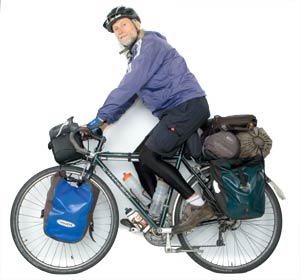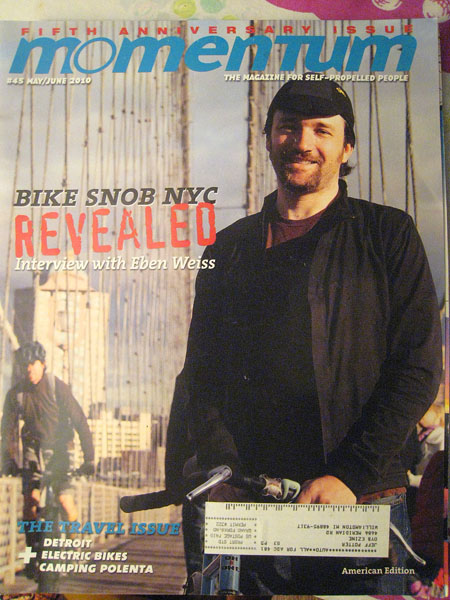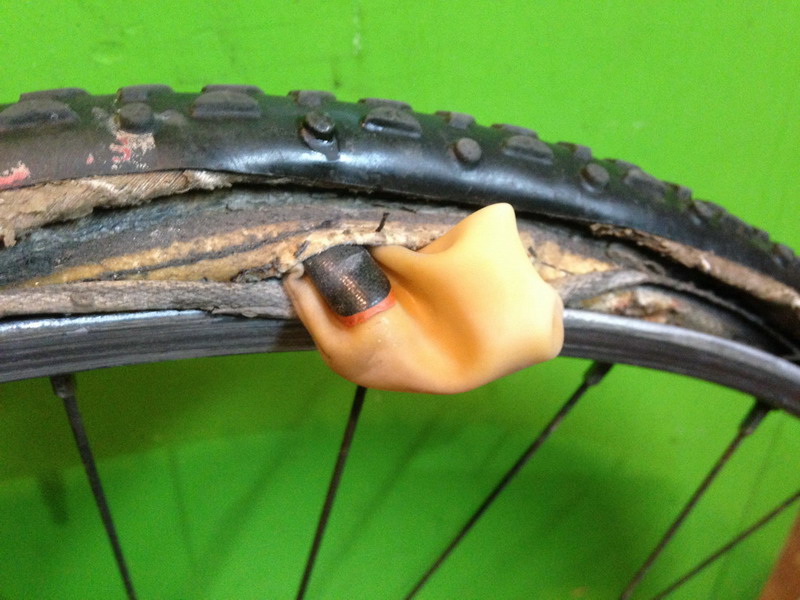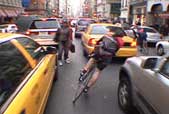George Christensen is a 55+ yr-old Chicagoan who bike messengers during winters and bike tours in the summers, around the world.
He also loves movies and attends some of the major film fests each year.
There was a recent write-up about him in the Reader, Chicago’s alt-tabloid, at this link (photo courtesy Reader):
www.chicagoreader.com/features/stories/ourtown/061124/rideglobal/
But he writes a bit, too. You can get on his email list of notions and exploits by writing to: george6567@yahoo.com. Or just keep your eyes peeled here from time to time. I’ll start posting his work.
Here’s his latest, from France. He visits France about Cannes time and stops by Craig’s house—another crazed biker, half-time Chicagoan and in-the-margins lifestylist. This time he dragged Craig out on tour…
***
Friends: Cognac is another of the many French towns
that have gained international reknown thanks to a
drink or food or condiment that originated there,
along with Dijon, Roquefort, Chablis, Champange,
Bordeaux, Beaujolis, Brie, to name a few. This city
of 20,000, about 50 miles northeast of Bordeaux and 25
miles east of the Atlantic, has several dozen
distilleries, many of which give tours and tastings of
the double-distilled, extra-potent wine known as
Cognac, a label that can only apply to the officially
sanctioned distilleries of this region.
Rather than a distillery, we opted for the Cognac
Museum and its sister Art Museum, a two-for-one deal.
The former moved into its new location, a former
chateau, just three years ago. Its first-rate
displays included several videos with English
translation via headphones. The English provide the
biggest market for the drink, and with this a region
that attracts many English tourists, most of the
displays included English translation.
Cognac is aged anywhere from two to fifty years,
losing about 2 percent of its volume to evaporation
each year, “the angel’s share”. One of the more
interesting videos was of the construction of the oak
barrels that the cognac is aged in. Another room was
devoted to the exotic glass bottles it is sold,
contributing to its glamour and prestige. There was a
shelf of books, including The DaVinci Code, that
mentioned cognac with the page marked.
If we had been more conscientious we could have
wild-camped in any of the many vineyards in the area
last night. It would have maintained our theme of
camping among agriculture indigenous to the region.
Maybe tonight, tho vineyards with their low height
don’t provide as much privacy as I prefer. They can
do, however, if they are over a rise and out of range
of anyone out strolling looking down the
well-manicured rows.
Last night’s campsite was on the fringe of a
waist-high field of wheat in rolling terrain framed by
a small forest along a stream, maybe our best yet.
Wheat ranks second to grapes as the most grown product
of this region. The night before we camped in a
forest of chestnut trees, the ground thick with spiney
chestnut carcasses. A walnut orchard along the
Dordogne River was another campsite. We also camped
in a field thick with slugs, something the French
don’t eat despite their kinship to snails, which we
have also encountered on our tents.
We have woken to a handful of slugs clinging to our
rain flies most nights, but that one campsite, on the
fringe of a small garden tucked beside an overgrown
meadow, was an extreme case. Our tents were speckled
with more slugs than a boulangerie has baguettes. It
took no effort, just some time, to flic them off.
Fortunately, they made no noise, at least discernible
to our ears, otherwise we would have had a truly
sleepless night. As it was, there were plenty of
other violations of the silence–the tinkle of bells
around the necks of sheep on a nearby hilside, the
hourly chime of the church clock not far enough away,
the toot of the trains as they entered a tunnel not
far from us, car horns warning their approach to the
one-lane wide underpass just below us beneath the
train tracks, and jets above landing and taking off
from a regional airport.
Still, it was fine camping, and no complaints from
Craig, who hasn’t been in a tent in years. He’s
proving a natural to this hobo-style of travel, having
no qualms about bathing and washing his gear in the
cold Dordogne River and under cemetery spigots, dining
on bread and cheese at roadside picnic tables and
village soccer fields and in his tent at night. His
French fluency has come in handy asking directions and
just being plain friendly with the locals. It is not
unusal for people to express shock that he is
American. He hardly looks it, wearing a wide-brimmed
straw hat astride his bike with a mismatched set of
panniers that he has scavenged here and there.
Having spent six months a year in France since
buying his house in the Cevannes 12 years ago, he is
well inculcated in the culture. He finds things in
the grocery stores that I am blind to–bags of
bargain-priced croissants, hunks of cheese at
spectacularly low prices, figs and assorted fruits.
I didn’t need to indulge in quiche, one of my
staples, the first couple of days, as he thought to
bring along a dozen hard-boiled eggs. He nearly
brought them fresh from his local Saturday farmer’s
market the day we left, but Onni warned him that fresh
eggs don’t peel very well, so he purchased the eggs at
the supermarket, and those did peel with ease.
The cycling world’s attention will be focused on
Cognac in a month-and-a-half, when it hosts stage 18
of The Tour on Saturday, July 28, the final time trial
of the race. The town does not yet have banners and
posters up promoting the vent, though the gardens
outside the town hall has a flower display with a
bicuyle and another of a map of France with the Tour
route marketed by flowers. It will be a 55.5 km route
to Angouleme, due east of here, where I intend to be
at the finish line cheering for Levi Leiphi,er, this
year’s American hope, trying to make it 9 years
straight for an American.
Later, George




